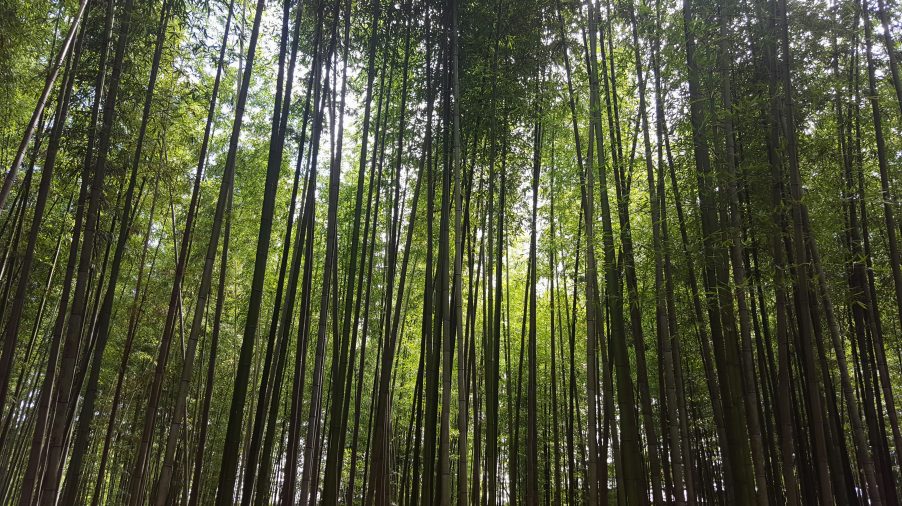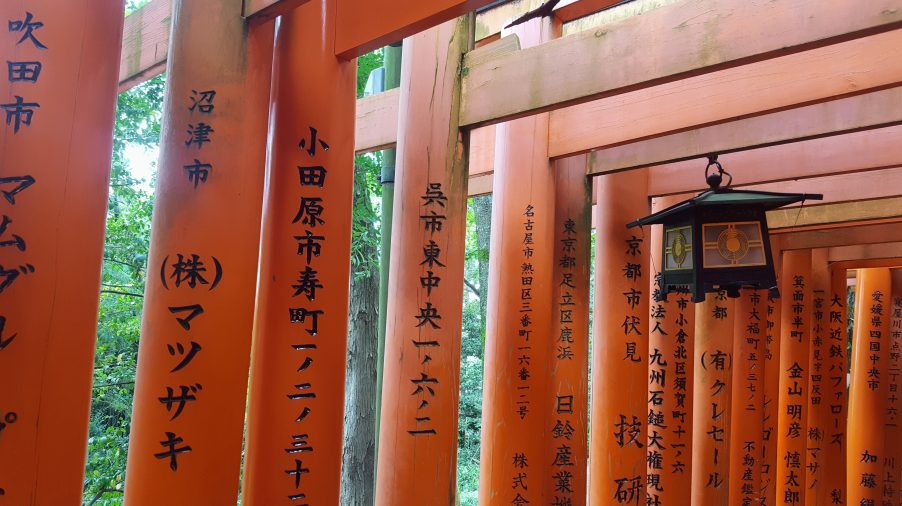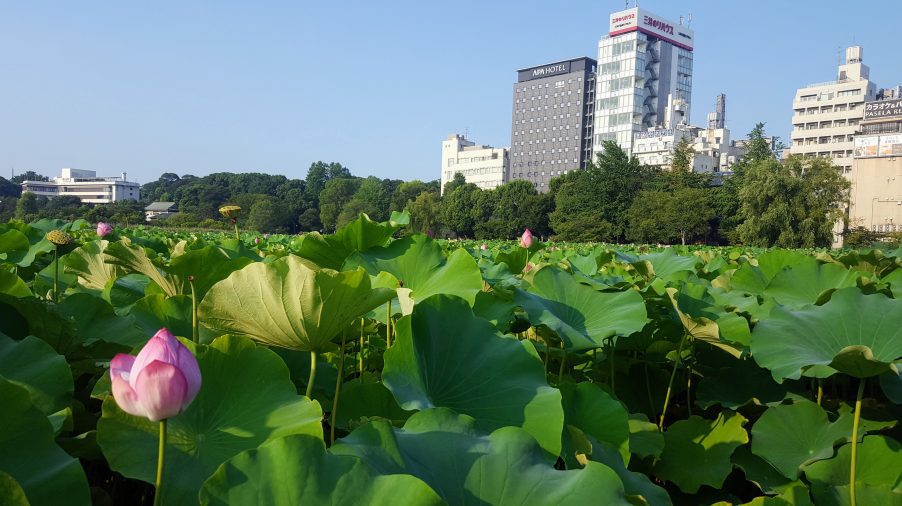
Being a tourist is exhausting
Interesting things:
- Wabi Sabi. This is a term for an environment in which imperfection is accepted and beautiful. Sounds like justification for why you had to randomly step up to use the bathroom or enter the hallway of the house.
- Convenience Stores. I thought there were a lot of 7/11s in Thailand but I had no idea what I was in for. Here, there’s a FamilyMart, 7/11, or Lawsons on every block and they serve legit food. One of my favorite quick eats are onigiri, small rice triangles with some filling. If you’re trying to do Japan on a budget, not a bad way to go.
- Rice bowl. Kyoto is known as the rice bowl because it’s surrounded by hills/mountains. Of course I’m a fan.
- Kyoto used to be the capital of Japan until around 1868 when the Royal family moved to Tokyo.
- TRAINS! The best way to get around the country is by train. The bullet train allows you to get from Kyoto to Tokyo in 2.5 hours. Non-residents can purchase a one, two, or three week rail pass and take unlimited rides between major cities. My dad and I got a 7 day pass for about $280 and maximized it by hitting Hiroshima, Tokyo, Kanazawa, and more.
- Rail pass is worth it if you’re going to more than one city. In other words, just from Kyoto to Tokyo and back wouldn’t need a rail pass, only a ticket. Otherwise, RAIL PASS. My dad and I just rode on trains for the sake of riding on trains J
- Even if you don’t take the bullet trains, there are lots of local trains to get you around.
- Trains are clean, run very often (we waited a max of 5 minutes for the next train, minus once) and in our experience very reliable on the schedule.
- Google Maps is a lifesaver. The train schedules are built in and will quickly tell you the upcoming public transit to get you to your destination.
- Another beautiful thing: you can load money onto an ICOCA card and use it on subways in almost all cities around Japan. This is unlike the US where NYC and Boston use different cards. The cards also work on some vending machines.
Safe to say I have a new standard for trains.
- Not to be outdone by trains, buses in Kyoto are also amazing! The convenient stops two minutes from our house has buses that take you all over the city and that run often. Flat 230 Yen fee. You need exact change, but every bus has a machine that will take your big bills/coins and split them. Brilliant! Public transit is actually used by locals, too, not a ton of cars around.

- Nintendo/cartoons. Nintendo was founded in Japan, anime is a big part of the culture, and there are mascots for everything here. Sometimes I feel like I’m in a live animation with the amount of ceramic cartoons, costumes, and bright colors that can be found around every corner. Tokyo was the epitome of this culture, with doll-like girls lining the streets advertising for stores.
- Japan is very clean, like littering? Not a thing.
- Jaywalking? Also not a thing. And honestly, it frustrated me to watch people wait at empty intersections just for the walk sign to change. My impatient self violated this too many times.
- Small-ness. Most accommodations/rooms are very small (though ours isn’t terrible) and ceilings a little low. I think it comes with being efficient that every inch of space is maximized in a house, in a neighborhood, and in the city. And hey, people are generally shorter too. I caught myself chuckling at the fact I could see over a huge crowd.
Monday-

Follow me into the bamboo forest…
- Wander through Nishiki Market of Kyoto with Dad in the 100 degree heat, coupled with a nice bike ride
- Work a bit from home
- Check out the Gion district at sunset
Tuesday-
- Early morning ride to Arashiyama, a 50 minute, easy bus route to the foothills on the edge of Kyoto
- Go to the Arashiyama Bamboo Forest, a path through tall bamboo stalks that leads to woods up a small mountain, was great to hike a bit and it was a little cooler due to the altitude and nearby river
- Had a great morning exploring, ended with a 30 minute hike up to the monkey park where we watched monkeys wander freely atop a hill, overlooking Kyoto proper
- Afternoon of work with a bike ride during break through the city, found an aqueduct with a nice path along it that served as a perfect place to watch another sunset.
Wednesday-

Fushimi Inari
- Avoiding typhoon day 1. We were told a typhoon was to hit sometime this afternoon, so we got up and out early to beat it.
- Ride (past the stop and then reverse directions) to Fushimi Inari shrine, the famous Kyoto shrine with thousands of orange torii gates.
- It was PACKED with people…guess no one was concerned with the storm.
- As with any trafficked attraction, we had to walk just a little bit farther than your average Joe to enjoy the site. This entailed hiking to the summit of Mount Inari. It’s about a 2 hour ascent but lined with gates all the way up and very pleasant. #worthit
- Despite being really crowded, definitely worth the visit
- Return home for the workday andddd no typhoon yet.
Thursday-

Biking before the ‘storm’
- Avoiding typhoon day 2. Surely it was going to come today, so we grabbed bikes early and rode around until it hit.
- Biked around the imperial palace, Nijo castle, and through the Shōren-in Monzeki temple area.
- Bunker down in the house, fill the bathtub with water, get groceries for a couple days, lock all the windows and doors, fire up the Netflix, and watch an INSANELY….underwhelming rain shower with some gusts of wind.
- The problem is all the trains in and out of Kyoto were shut down so even if we wanted to leave, we couldn’t
Friday-
-

Shukkeien garden
Time to activate the Rail Pass! We left Kyoto station, got to the train just in time, and quickly realized we’d got on one of 2 lines not covered by the rail pass….after spending a couple stops avoiding the officer, we did the right thing, got off at a station and waited for the correct line.
- Get off in Hiroshima and head right to the Atomic Bomb Dome and Peace Park. Also get to the Hiroshima Peace Memorial Museum before the crowds hit (a MUST, gets crazy).
- An incredibly somber, intense morning. The thought of going about your normal routine and suddenly having a bomb dropped killing 140,000 people almost immediately is wild. The museum and area had a heavy focus on the incident itself, not the war, and emphasized the need for world peace going forward.
- Facts: the bomb detonated in the air, dropped on August 6, 1945 and killed 200,000 people by then end of the year. The A-Bomb Dome was a former prefecture hall and has been preserved as a reminder of the damage. People are still physically and emotionally impacted today by the event.
- Wander through Hiroshima to the castle and Shukkeien garden, a traditional Japanese garden (not worth it, in my opinion). Sadly due to the bomb damage, most of the city is very modern!
- Train back to Kyoto, about 2 hours, for the Gozan Okuribi Fire Festival, celebrating the end of the Obon holiday.
- Obon is a Japanese holiday in which people honor their ancestors. You celebrate by taking time off and spending it with family. The festival in Kyoto is one of the more well-known celebrations.
- Gozan Okuribi Fire Festival: giant characters and motifs are lit up on 5 mountains on Kyoto’s north side. For us, that meant sitting with hundreds of other people along the Komo River to watch one of the 5 symbols light and burn for maybe ten minutes (through a tree that was obstructing the view). Cool to be a part of but nothing earth shattering.

One of many floor to ceiling crazy stores
Saturday- TOKYO
- 5 hour bullet train to Tokyo! It really is crazy that these run every 15-20 min. Guess it’s a sign how much locals use the train.
- Check into our hotel in the Ueno district (a 25 minute train ride from the most well-known parts of Tokyo).
- Check out the Ameya-Yokocho open market and Ueno Park nearby. The park is unique in that it has a huge pond entirely filled with giant Lili pads.
- Subway to the Sensō-ji Temple. Worth seeing more for the area around it, lots of cute shops. Also cool to see the old temple in the foreground and the Tokyo Skytree (the world’s tallest tower) in the background.
- Walk towards the Skytree, then subway to the Akihabara district
- This area is well-known for its ‘maid cafes’ where women dress as almost cartoon maids and serve you food. We opted out of this experience….but we were oh so close *eye roll*
- It’s also known for having lots of arcades, anime stores, large electronic stores, and a Don Quijote store (one of many in the city). We walked into a few of these and were, to quote my dad, ‘overwhelmed on all senses’. It was dark at the time and the huge lights and characters lining the street were exactly what I pictured Tokyo to be like.
- For the sake of walking off another Indian dinner, we went to the Chuo district and took in the upscale shopping streets. Like an Asian, large scale Newbury St.
- Exhausted and sore feet led to a great night’s sleep
Sunday- TOKYO

Shibuya Crossing
- Day two of exploration started with the ride to Shibuya station, famous for leading you to Shibuya crossing, one of the world’s busiest crosswalks. At every time of day, 6 lanes of traffic stop to let hordes of people walk in every which direction. We crossed four times for the fun of it.
- Shibuya itself is a bunch more shopping, we were more in it for the people watching.
- From there, walked to the Harajuku district. As if the rest of Tokyo wasn’t bizarre enough, this area epitomized it. First stop was Kiddy Land, a store with sections for all your favorite animated characters. Our personal fav was Snoopy Land.
- Second stop was the true highlight for my dad: The Kawaii Monster Café. We had Candy Salad, sat under the blue and purple mushrooms, fanned ourselves with a pink hello kitty fan, and watched two women do the Monster Dance. What fun! Lol…nothing like an overpriced ticket to a gumball decorated bathroom.
- Last stop in this area was Takeshita Street, another crowded shopping street. Although to be fair, this one had rainbow cotton candy the size of your head.

Laughing or terrified?
- Needing a break from the shops, we headed to the Meiji Jingu temple. Despite still being very populated, it actually felt refreshing! The temple is nestled in a large park.
- Made our way to the Shinjuku district (Shibuya and Shinjuku are the most visited areas in Tokyo, most people stay there). I’ll let you guess what we saw there…YES! More shops, more lights, more people, and more interesting shows. This area houses the famous Robot Restaurant. Despite getting high praise from Remote Year, we skipped it.
- Had a great meal of Okonomiyaki, a savory Japanese pancake, at Teppan Baby. Having such a hard time finding gluten free options, it was amazing to have a place that accommodated dietary needs. Super yummy!!
- Peeked at the Golden Gai area where you can find lots of bars in Shinjuku and then wandered the streets at night, making our way back to Shibuya. Both districts are cool to see at night.
- Overall, I’d describe Tokyo as New York City except instead of one Times Square, there’s maybe 6. Sources will tell you different things but Tokyo has a population around 14 million, making it one of the top 10 most populous cities in the world. For comparison, NYC has about 8 million.
Step count racked up and kicked off a week of exploring out of Kyoto. Feeling especially lucky and grateful for all of the quality time with my dad. Oh and I took some time off for work, finally, so here’s to a true vacation!















































